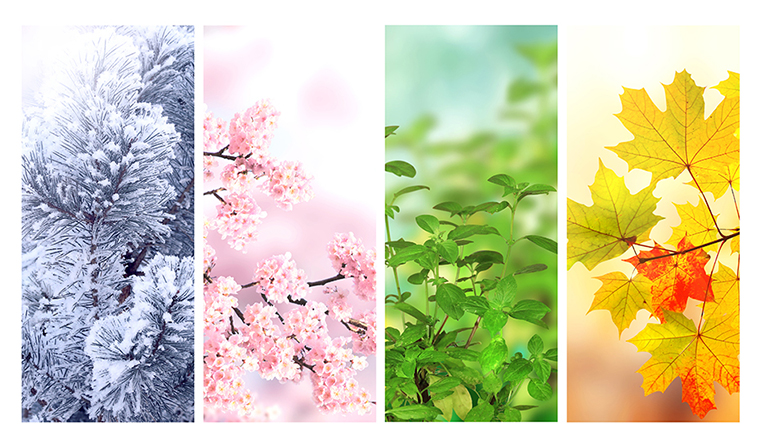In Japan, the changing seasons are not just a backdrop to daily life but a profound source of inspiration woven into the fabric of art and literature. Among the most exquisite expressions of this sensitivity is the use of “kigo” (季語), or seasonal words, in haiku poetry. Kigo encapsulate the essence of a season in a single word or phrase, reflecting Japan’s deep cultural connection to nature and the impermanence of life. Understanding kigo offers a meaningful glimpse into the Japanese worldview, where the natural world and human emotion are intimately intertwined.

The Origins and Importance of Kigo
Haiku, the traditional form of Japanese short poetry, typically consists of 17 syllables arranged in a 5-7-5 pattern. Central to its structure is the inclusion of a kigo, a word that signifies the time of year. The practice of using kigo traces back to the classical renga (linked-verse) tradition of medieval Japan, where poets collaboratively composed verses, often anchoring their imagery to seasonal cues. When haiku emerged as an independent form in the Edo period, poets like Matsuo Bashō elevated the use of kigo to an essential poetic device, imbuing their brief compositions with rich emotional resonance.
A single kigo can evoke an entire atmosphere. For example, “sakura” (cherry blossoms) immediately conjures the ephemeral beauty of spring, while “yuki” (snow) calls to mind the stillness and purity of winter. Kigo not only situate a poem temporally but also imbue it with layers of cultural meaning, drawing on centuries of collective experience and memory associated with each season.
Seasonal Categories and Nuances
Kigo are traditionally categorized into five seasonal divisions: spring, summer, autumn, winter, and New Year. Each category encompasses a wide range of phenomena, including weather patterns, flora and fauna, human activities, and traditional festivals. The “saijiki” (季語計) — a comprehensive almanac of kigo — organizes these seasonal terms along with illustrative haiku, serving as a vital reference for poets.
The choice of kigo requires careful consideration. Even within the same season, different kigo convey distinct moods and nuances. For instance, “fuubutsushi” (the sensory hints of early summer) carries a tone of anticipation and freshness, while “tsuyu” (rainy season) suggests melancholy and introspection. Mastery of kigo lies not just in matching a poem to the correct season, but in selecting a word that deepens the emotional and atmospheric impact of the haiku.
Cultural Context and Emotional Resonance
Kigo reflect more than the physical characteristics of a season; they encapsulate the emotional landscape associated with it. This sensibility aligns with the Japanese aesthetic principles of “mono no aware” (the gentle sadness of transient beauty) and “wabi-sabi” (the appreciation of imperfection and impermanence).
Spring kigo, such as “ume” (plum blossoms) or “koinobori” (carp streamers), celebrate renewal and hope, while also acknowledging the fleeting nature of life. Autumn kigo like “momiji” (autumn leaves) or “tsukimi” (moon viewing) often evoke a poignant awareness of change and mortality. The emotional resonance of kigo allows haiku to transcend mere description, creating a profound shared experience between poet and reader.
In Japanese culture, the use of kigo extends beyond poetry. Seasonal references permeate daily life, from culinary traditions and festival celebrations to clothing choices and greeting cards. This cultural rhythm attunes people to the natural cycles around them, fostering a deep appreciation for each passing moment.
Modern Evolution and Global Appreciation
While the traditional use of kigo remains central to classical haiku, contemporary poets have adapted the concept to reflect modern experiences and global contexts. New seasonal words emerge, such as “air conditioner” for summer or “Christmas lights” for winter, blending traditional sensitivity with contemporary life.
Moreover, haiku has gained worldwide popularity, and poets outside Japan have embraced and reinterpreted the use of kigo. Although some non-Japanese haiku deviate from strict seasonal references, many poets continue to honor the spirit of kigo by drawing inspiration from their own local environments, thus expanding the tradition while maintaining its essence.
Despite modernization, the role of kigo in Japanese culture endures. It remains a subtle yet powerful reminder to pause, observe, and cherish the ephemeral beauty of the natural world. Through the lens of kigo, each moment is imbued with poetic potential, deepening the connection between humanity and the ever-changing seasons.










